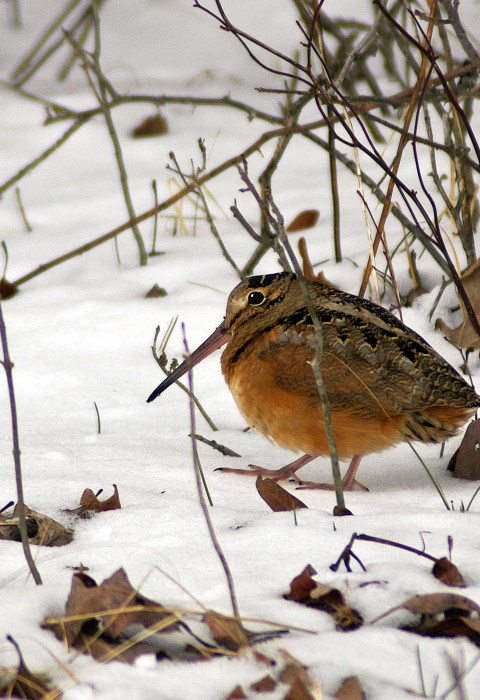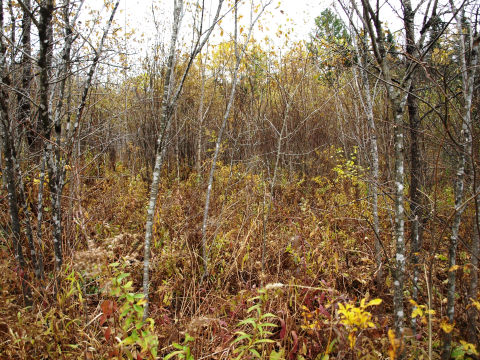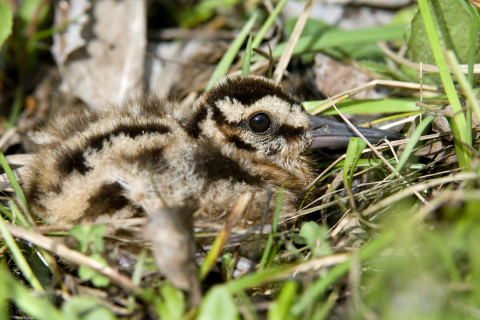AKA "Timberdoodle"
The American woodcock, also known as the timberdoodle, is a short-legged, ground-dwelling bird that feeds mainly on earthworms, which it catches by probing in the soil with its long, prehensile bill. Woodcock breed in eastern North America. Most migrate to the southern states for the winter, but some remain as far north as the Mid-Atlantic. The species' population has fallen in recent years as the amount of young forest has dwindled in the Northeast.
Learn more about the woodcock’s range, biology, and behavior at Cornell Lab's All About Birds website.
Woodcock Need Different Habitats
Woodcock show a clear preference for young forest and shrubland, also known as early successional habitat. They use slightly different habitats depending on the time of day and the season.
Singing Grounds: To attract mates in spring, males call and make dawn-and-dusk courtship flights from clearings in the woods, log landings, old fields, and road edges.
Feeding Areas: Woodcock feed where the soil is damp: alder flats along rivers and wetlands, abandoned farm fields, overgrown orchards, and areas where timber has been harvested within the last 20 years.
Nesting and Brood-Rearing Cover: Females raise their chicks in stands of young hardwood trees where saplings and shrubs are thick and earthworm prey is abundant.
Roosting Areas: At dusk in late summer and early fall, woodcock fly to weedy fields and newly logged woods where they spend the night roosting on the ground beneath patchy plant growth that protects them from predators.
Bringing the Woodcock Back
The Woodcock Management Plan brochure explains how conservation partners and landowners are creating habitat to help woodcock in the Northeast.
The American Woodcock Conservation Plan is an in-depth technical report that documents an ongoing decline in the species' population and habitat and makes recommendations on how to reverse those trends.
Wildlife scientists have developed Best Management Practices for creating and refreshing woodcock habitat.
The Ruffed Grouse Society/American Woodcock Society, a partner in the Young Forest Initiative, works to create healthy forests for these two species, which are often found in the same habitats.
A Landowner's Guide to Woodcock Management in the Northeast is an older publication with good non-technical advice on making habitat.
Conservationists' efforts to help this special bird are explained in an article "Woods for the Woodcock" in Northern Woodlands magazine.



